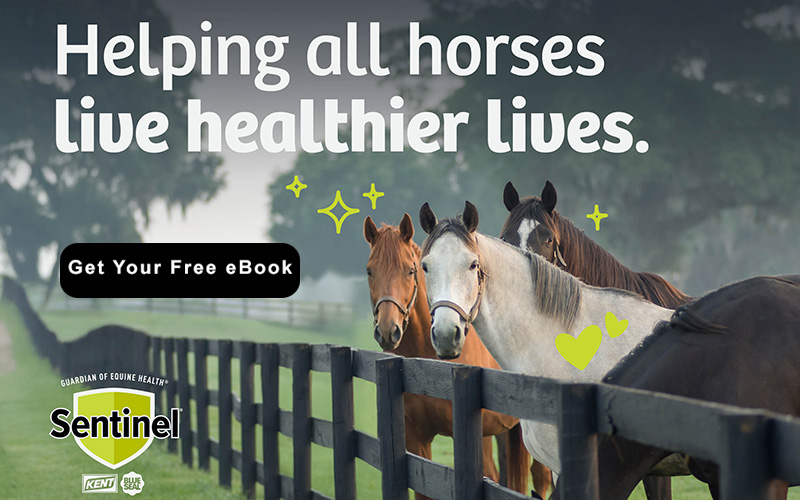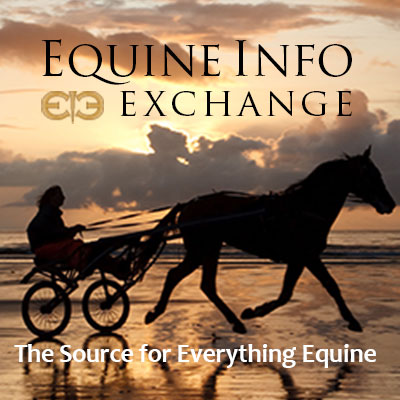Health & Education
We all want the best care possible for our horses. The Heath & Education section covers both Learning Institutions, Organizations as well as many sources for equine assistance including Veterinarians and Farriers.
For those who want a to formally study horses, the Education section includes College Riding, Equine Studies, and Veterinary Schools. Learn about the wide variety of horses in the Horse Breeds section. Supplements and Treatments Therapy are also included in the section.
Everyone can learn from Fine Art and there are some specialty Museums that might surprise you.
Horses as a therapy partner enrich the lives of the disabled. These facilities are listed in our Therapeutic Riding section. To help children and young adults build confidence and grow emotionally, please see the resources available on the Youth Outreach page.
Looking for a place to keep your horse? You can find it in the Horse Boarding section. Traveling? Find a Shipping company or Horse Sitting service if your horse is staying home!
Want to stay up to date with the latest training clinics or professional conferences? Take a look at our Calendar of Events for Health & Education for the dates and locations of upcoming events.
Do we need to add more? Please use the useful feedback link and let us know!
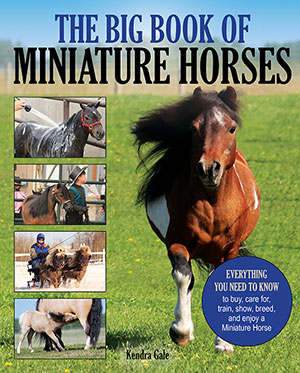
by Kendra Gale
The benefits of interaction with horses are only just beginning to be properly explored, and with their unique small size and very curious personality, Miniature Horses are very well suited to be therapy animals.
Equine Assisted Learning and Equine Assisted Therapy
Using horses as a part of psychotherapy, or to teach life skills, is a rapidly growing modality. Julia Morgan, of Horse Powered Connections, is a certified FEEL practitioner. FEEL stands for Facilitated Equine Experiential Learning, and horses are a very active participant in the process. Using a horse-led series of exercises, equine experiential learning works with the horse’s natural sensitivity to physical movement and emotional states to help people gain self-knowledge and acquire skills leading to personal growth through positive life changes.
Julia’s focus is on children. Her journey began with her own son, who was non-verbal and diagnosed as severely autistic. He is now an outgoing, talkative, and confident little boy, a transformation that Julia credits to the horses and learning to connect with his environment more like a horse would. Julia enjoys working with children and finds a special joy in helping children face the challenges arising from ADD (attention deficit disorders), anxiety, and ASD (autism spectrum disorder). She has seen remarkable changes from children’s interactions with the horses, from a teenage girl with ADHD (attention deficit hyperactivity disorder) who proclaimed that her brain had never been so quiet, to a young autistic boy who was once again excited to go to school and make new friends because he’d been able to make friends with the horse.
Read more: Miniature Horse Therapy: Great Big Good Things in Small Packages

by Dan Ross
How long have humans been aware of the cruel psychological toll of war? For a clue, just turn to the Ancient Greeks, and the play Ajax, about a decorated general whose hellish recollections of battle drive him into deep depression and eventually to suicide.
For millennia then, we have recognized many of the conditions that now fall under the umbrella of Post Traumatic Stress Disorder (PTSD). And yet, beyond a handful of common treatments for PTSD with only so-so success rates, the medical establishment has largely ignored so called “alternative” treatments for which there’s overwhelming anecdotal evidence as to their benefits.
Until now, that is. Columbia University’s ongoing Man O’ War research project, scheduled to wrap this summer, seeks to finally confirm what has also been suspected since the heyday of Greek antiquity: that horses, whose hardwired flight instincts mirror in so many ways the human symptoms of PTSD, have the unique ability to help heal the mental wounds and scars of traumatized veterans.
“Even the best treatment currently is effective for no more than 50 to 60% of patients with PTSD,” said Yuval Neria, professor of medical psychology at Columbia and a co-director of the program. Which is why the patients involved in the Man O’ War Project are “looking for something more promising,” Neria said. “There’s a lot of room for improvement.”
The study aims to standardize the way horses can be used to help veterans with PTSD recover from the horrors of their past by producing a manual that other equine therapy programs–many of which vary in approach–can use as a blueprint to work with and from. And by standardizing and legitimizing equine therapy in this way, it could open the door much wider for more racehorses to be used in such programs once their racing careers end.
Read more: Man O’ War Project Helping the Soldiers of War Heal
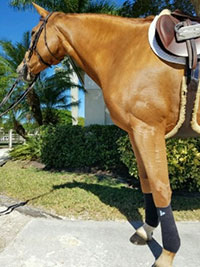
by Douglas Spatz, President, EyeOn Equine Care
I had a discussion the other evening with a family member about the pros and cons of icing and was told it’s used to treat horse’s legs and is recommended by so many professionals. My response was “Ice does not reduce swelling; the lymphatic system does.”
Actually, ice has been shown to reverse lymphatic drainage, causing backflow of fluid into the injured area and worsening edema . What is needed is anything that promotes circulation and movement of fluids that will help the lymphatic system do its job.
Icing damaged tissue does sometimes give temporary pain relief. However, it also delays healing, causes additional damage, increases swelling, and, perhaps most importantly, shuts off the nerve signals that alert you to which movements are harmful to your recovery process.
Since “good movement” is an essential part of the healing process (and bad movement is harmful), you need (and want!) the feedback more than you need (want) a short-term distraction that ultimately makes your problem worse, not better.
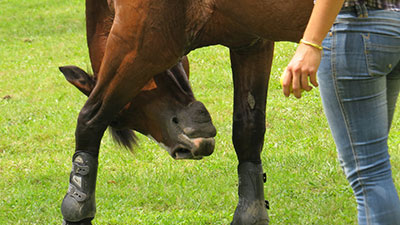
by Bonnie Marlewski-Probert
There are two mantras I lived by when training horses fulltime:
“Never pick a fight unless you know you can win the battle and P.S. if you get into a physical fight with a horse, you will never win that battle.
Training horses is a thinking man’s sport. You don’t have to be the smartest guy in the world but you must always be smarter than the horse you are working with.” Bonnie Marlewski-Probert.
The four key elements that every successful trainer must have are:
1. Time. Anytime you attempt to train your horse without allowing plenty of time, the temptation to rush is sure to sabotage your progress and cost you more time in the long run,
2. Always have a Plan A and a Plan B. The trick to training horses successfully is to think through what you want to accomplish and get a plan A and a Plan B in your head as to how you are going to achieve that goal, just in case Plan A fails.
3. Patience. Rome wasn’t built in a day and I know of no horse or husband that was trained in a day! Sometimes, the greatest successes come inch by inch, day-by-day. Remember that as you train various elements of a new skill, those same elements will come into play in many more advanced moves so, by taking your time and focusing on teaching the elements of a larger maneuver, you are actually shortening the learning curve for more advanced moves that you will be training down the road. This is what I call “elemental training.” Teaching the elements and then putting them all together to create the new skill.

by Heather Wallace
Equestrian and Otherwise -This was easy for me to write but extremely difficult to share. My daughter insisted it would help others and was determined that I share her story. After all, she's that the kind of person. Cameron is special, as all children are in their own way. She is sassy, confident, and intelligent.
She also has cerebral palsy.
We don’t know when she had the stroke, or “brain bleed” as she calls it, but she was diagnosed at 18 months old. She met every developmental milestone and can do anything. The only difference is she has to work harder than others.
For those who are unfamiliar with cerebral palsy, here is an definition from the Cerebral Palsy Alliance:
“Cerebral palsy is an umbrella term that refers to a group of disorders affecting a person’s ability to move. It is due to damage to the developing brain either during pregnancy or shortly after birth.
Cerebral palsy affects people in different ways and can affect body movement, muscle control, muscle coordination, muscle tone, reflex, posture and balance. Although cerebral palsy is a permanent life-long condition, some of these signs of cerebral palsy can improve or worsen over time.”
There are many pediatric stroke survivors in the world, although it is rarely discussed. Cameron has never known a different life. While she may get frustrated at times, especially as she gets older, she is a fighter. Good luck to the person who tries to tell her what to do.
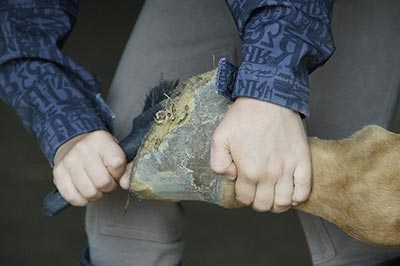
by Anne Gage
Handing your horse's feet regularly is necessary for his health and wellbeing. But did you know that how well your horse behaves about having his feet handled is also a sign of how much he trusts you?
It takes a huge amount of trust for your horse to be relaxed while having a foot held. As a flight animal your horse's natural instinct is to resist having his feet restricted in any way.
If your horse won't let you handle his feet or behaves badly when you try, it is not only frustrating it can also be dangerous.
Follow these tips if you are nervous about handling your horse's feet or if your horse has any of these or similar behaviours:
- refuses to lift his foot
- slams his foot down as soon as you pick it up
- leans his weight on you when you pick up his foot
- rears, strikes or kicks when you try to pick up a foot or touch his leg
Read more: Horse Training: 7 Essential Steps for Safely Handling Your Horse's Feet
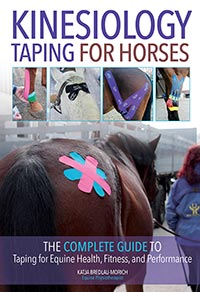
by Katja Bredlau-Morich
Kinesiology taping was developed by the Japanese chiropractor Dr. Kenzo Kase for use on the human body to support his chiropractic treatments. The exact date of development varies, somewhere between 1969, 1973, and 1979 depending on different sources. It obviously took some time from Kase’s first conception—through the prototype to the final production—which is probably why there are various dates of development.
But it was certainly developed sometime in the mid-1970s. It was at the end of the 1980s that Japanese and Chinese athletes were first seen wearing these colorful tapes at athletic competition. During the 2008 Olympic Games, the use of kinesiology tape grew and athletes from other nations used it as well. Four years later, at the 2012 London Olympic Games, kinesiology taping was almost a common standard for athletes.
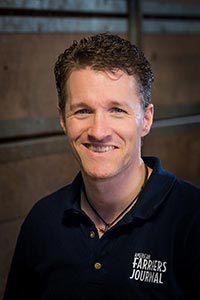
by Jeff Cota
Proposed changes to the American Veterinary Medical Association’s (AVMA) Model Veterinary Practice Act would have wide-ranging ramifications for the farrier industry.
The most significant of the proposed revisions call for the elimination of the farrier exemption from the Model Veterinary Practice Act (MVPA). The proposed elimination of the exemption can be found in Section 6 – Exemptions, subsection 8, Page 17.
This section exempts farriers from Section 2 – Definitions, subsection 15 of the MVPA, which defines “Practice of veterinary medicine,” in part, as:
“1. To diagnose, prognose, treat, correct, change, alleviate, or prevent animal disease, illness, pain, deformity, defect, injury, or other physical, dental, or mental conditions by any method or mode; including the:
- performance of any medical or surgical procedure, or
- prescription, dispensing, administration, or application of any drug, medicine, biologic, apparatus, anesthetic, or other therapeutic or diagnostic substance, or
- use of any complementary, alternative, and integrative therapies, or …
- determination of the health, fitness, or soundness of an animal, or
- rendering of advice or recommendation by any means including telephonic and other electronic communications with regard to any of the above.”
Read more: AVMA Proposes Elimination Of Farrier Exemption From Veterinary Practice Act
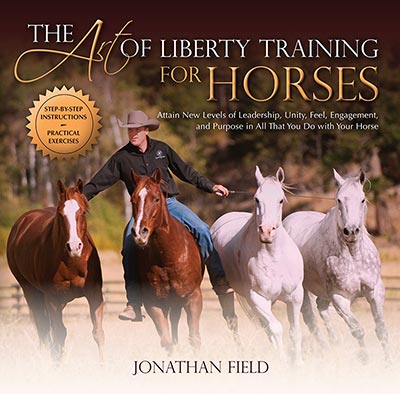
by Jonathan Field
Jonathan Field is known through the world for his liberty training and horsemanship skills. The subject of a documentary called “In Harmony with Horses” on Red Bull TV, his thoughtful approach helps people connect with and train horses of all breeds and disciplines.
Whether we want to play with a horse at liberty or develop a great riding horse, teaching him to be super confident and friendly with all kinds of objects, actions, and activities helps the relationship develop trust. A tame and trusting horse is one that has an open mind for you to teach. By nature, horses are skeptical. Knowing this, take time getting yours used to many different objects to build trust. Each object I train with has different texture, noise, and size. This builds confidence in my horse—he learns that there’s no need to worry about scary things when I’m there.
There are several keys to helping your horse be confident:
1. Let him move his feet. If he feels trapped when tied or confined, he may instinctively fight for freedom. Make sure while he moves it’s not moving his feet over you, though. Remember personal space! Even when he’s scared, that is still not up for a vote.
2. Don’t walk straight up to your horse. It’s predatory. Instead, approach him, then retreat, and repeat, getting incrementally closer each time.
Read more: The Keys to Building Confidence in Your Horse from a Master Liberty Trainer
- What is a Shagya-Arabian?
- New Year’s Resolutions for the Senior Horse Owner
- Understanding Cold-Induced Laminitis
- Keeping Your Horse Calm Naturally During Stall Rest
- Holiday Treats for your Horses!
- How “Let’s Do It!” Can Change Your Horse Business…and Your Horse
- Dr. David Nash and NSF Grant Moves Equine Medicine into the Future, with Wide-Ranging Visions for Human Use, as Well
- Fall Equine Wellness: What Your Horse Needs
- The Effect of Minerals on the Insulin Resistance (IR) Horse
- Hurricane Harvey and Irma Horse Rescues
- Texas’ Horseback Emergency Response Team: Helping Hands and Horse, in the (Literal) Trenches
- What You Need to Know: Equine Leg Bandaging
- Quick Tips: Q&A: Controlling Parasites in Horses
- EIE Exclusive Interview with Heather Kitching of Angrove Stud, UK, Home of the Tobiano Racehorse
- In Hot Pursuit of Thoroughbred and Quarter Horse High Colors
- Spring Grass Safety - A Review
- Must-Haves for Your Equine First-Aid Kit
- Tracking Down the Tobiano Legend
- Orphan Foals: Success is Possible
- Health, Horses, Healing and Hippocrates






